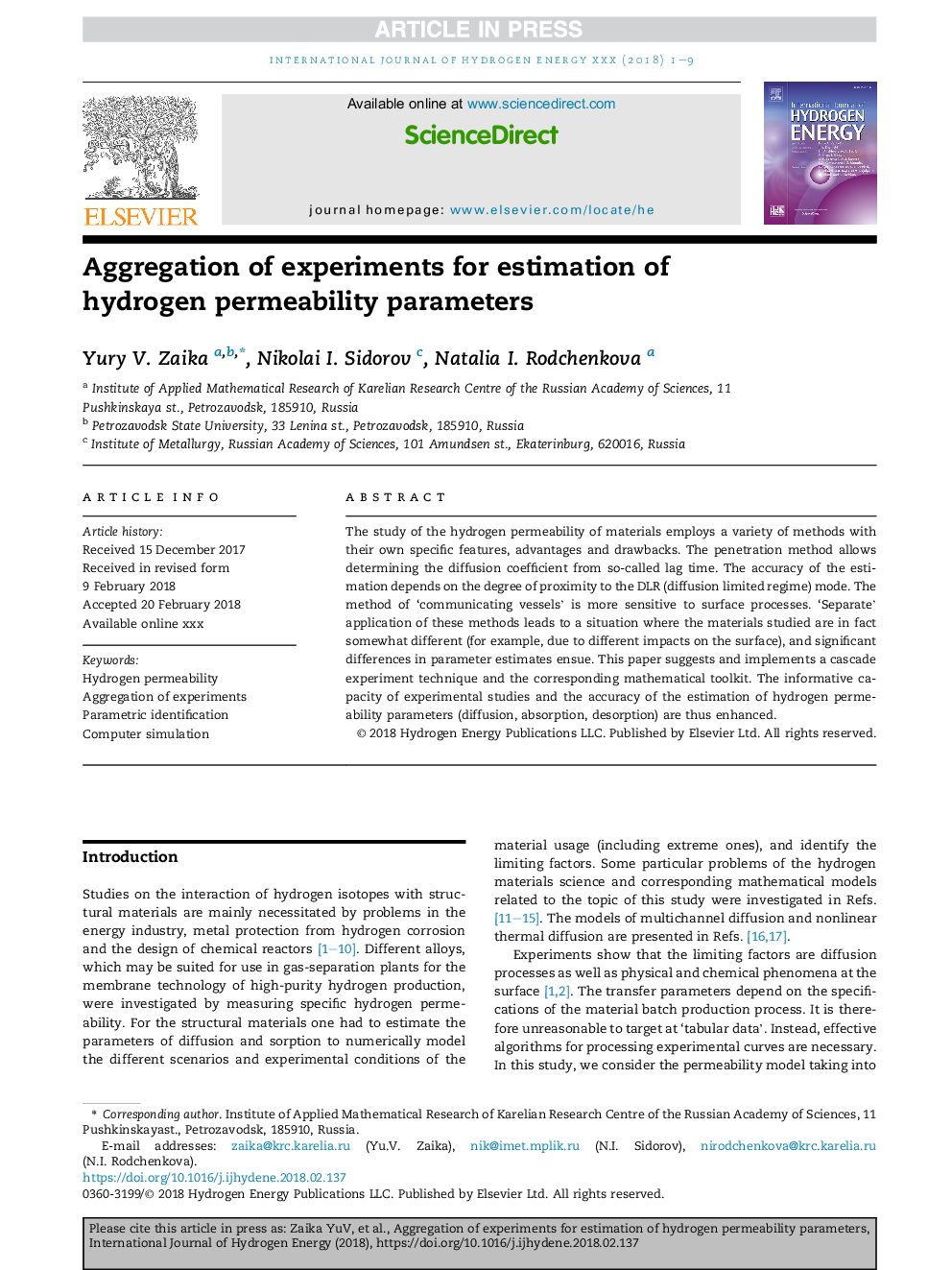| Article ID | Journal | Published Year | Pages | File Type |
|---|---|---|---|---|
| 7706261 | International Journal of Hydrogen Energy | 2018 | 9 Pages |
Abstract
The study of the hydrogen permeability of materials employs a variety of methods with their own specific features, advantages and drawbacks. The penetration method allows determining the diffusion coefficient from so-called lag time. The accuracy of the estimation depends on the degree of proximity to the DLR (diffusion limited regime) mode. The method of 'communicating vessels' is more sensitive to surface processes. 'Separate' application of these methods leads to a situation where the materials studied are in fact somewhat different (for example, due to different impacts on the surface), and significant differences in parameter estimates ensue. This paper suggests and implements a cascade experiment technique and the corresponding mathematical toolkit. The informative capacity of experimental studies and the accuracy of the estimation of hydrogen permeability parameters (diffusion, absorption, desorption) are thus enhanced.
Related Topics
Physical Sciences and Engineering
Chemistry
Electrochemistry
Authors
Yury V. Zaika, Nikolai I. Sidorov, Natalia I. Rodchenkova,
